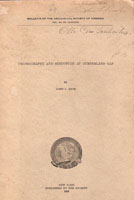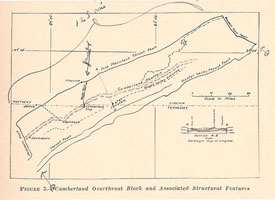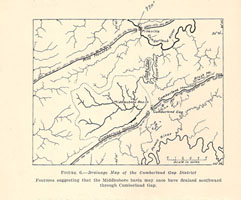John L. Rich (1884–1956): FATHER OF CLINOFORM, UNDAFORM, AND FONDOFORM
Modified from a presentation by Gerald M. Friedman in 2001
In October 1950 Walter H. Bucher (1888-1965), chair of the Department of Geology of Columbia University walked into my Columbia University office with the news that Professor Otto von Schlichten (1886-1954) of the University of Cincinnati had just died and that I had been appointed his successor. Arrangements had been made for me to meet with John L. Rich, chairman of the Department of Geology. Rich was a stratigrapher and became my favorite colleague. In my textbook "Principles of Sedimentary Deposits" the index lists him on 13 separate pages, more than any other geologist. Rich had a paper in process on how a depositional terrace affects sediment deposition. He applied the terms shelf, slope, and bottom. When Rich submitted his manuscript to the Geological Society of America, it was accepted on the condition that he coin Greek terms for these environments. The editor felt that simple English terms would give rise to confusion. In response to the editor's insistence, Rich chose three Greek words as general ones for the three critical environments. These are (1) unda for the shallow water overlying the shelf, (2) clino for the deeper water overlying the slope, and (3) fondo for the deepest water covering the bottom of the basin.
Rich joined the English geomorphological term form with the Greek words. Thus he proposed (1) undaform for any surface underlying an unda environment; (2) clinoform for any surface underlying a clino environment; (3) fondoform for any surface underlying a fondo environment.
Rich's terms are now known in the Earth-Sciences community, especially among geophysicists working with continuous seismic-reflection profiles. But in the early 1950s his new words were scorned. At a meeting of the Geological Society of London in 1952, in the discussion following the presentation of the paper by Ph. H. Kuenen (1902-1976), O.T. Jones (1878-1967), Woodwardian Professor of Geology at Cambridge University and past president of the Geological Society of London, remarked that he "hoped that the barbaric nomenclature devised by J.L. Rich for what corresponded essentially to shelf, slope, and bottom environments would not find a place in British geological journals." Professor Jones has lost out; Rich's terms have gained acceptance.
In 1933 Rich published a classic paper on the Physiography and Structure at Cumberland Gap. Click on the images below to see larger versions of some of his hand-drawn figures.
 |
 |
 |
 |
 |
 |
 |